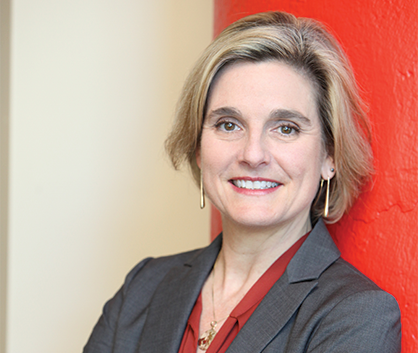Navigating Construction Challenges in SW Florida
Five Key Solutions to Help Your Club Succeed
Read More Chambers recently brought on Lee Hyden, AIA, NCARB, LEED AP as the Director of Architecture at our Baltimore Office. With a valuable professional background in both architecture and interior design, Hyden brings an unrivaled passion for comprehensive design to the table. Of course, this attitude couldn’t fit in better with Chambers’ 360 degree approach to private club design! Here she shares more about her past experiences in the field, her bright future at Chambers, and her appreciation for cohesion and collaboration.
Chambers recently brought on Lee Hyden, AIA, NCARB, LEED AP as the Director of Architecture at our Baltimore Office. With a valuable professional background in both architecture and interior design, Hyden brings an unrivaled passion for comprehensive design to the table. Of course, this attitude couldn’t fit in better with Chambers’ 360 degree approach to private club design! Here she shares more about her past experiences in the field, her bright future at Chambers, and her appreciation for cohesion and collaboration.
CR: How did you find a passion for architecture and interior design?
LH: In a sense, it’s part of my DNA. Even as a child I designed houses for my family. Actually, it was my love of art that led me to study interior design in college. I think of design and architecture as a holistic art. I’ve always practiced interior design with an architectural perspective – meaning that I have always thought of it as a complete experience. I initially worked for architecture firms, so I saw the disconnect between the two frequently. I had a strong desire to bridge that gap and I thought I’d have more of an ability to do that as an architect – so I went back to school to get the proper degrees and certifications.
CR: Speaking of “bridging the gap,” you have done some lectures on the disconnect between interior design and architecture. Why do you think connecting the two is so important?
LH: To solve design problems and produce the best designs possible, the experience of the space must be cohesive. You don’t want the outside to look one way, then enter the building and have it feel completely different. Instead, you want to create a seamless, intentional experience of the space. It also creates continuity between the master plan, the building itself, and the interiors. It allows them to make sense together and serve a designated purpose.
CR: How do you go about putting those ideas into action?
LH: When you first start a project, you need to take an integrated design approach. That means that early in the process, architects, interior designers, contractors, and clients – the entire team – must work together and be clear about the project’s goals and objectives. And the whole team needs to map out the route to accomplishing those goals and objectives. When that happens, you may spend more time working upfront, but on the back end you’ll minimize construction document changes or late-stage design changes. Late-stage changes are not only difficult to execute, but they’re often more expensive as well. Taking an integrated approach from the beginning isn’t just convenient – it’s actually more cost effective.
CR: What aspects of your background have prepared you for working in private clubs?
LH: A couple of things. Firstly, I have experience designing high end luxury residences, which is something I’ve done to varying degrees throughout my career. In a way, it connects with the idea that private clubs are a “home away from home” for members. Having that background also gives me an appreciation of the materials we use and their tactile qualities.
Interestingly, working in higher education has also given me to have an understanding of multiuse and communal spaces. Many higher ed spaces are microcosms of the larger world – they have the student center, the fitness center, the classrooms, etc. Clubs have a similar layout with their main clubhouses, fitness centers, tennis centers, and more. In a strange way, the two industries reflect each other – at least from a design perspective.
CR: So far, what do you enjoy the most about working for private clubs?
LH: There are lots of things I’ve enjoyed, but what stands out the most is working with the people – the clients, the committees, and the members. Just last night the Executive Team and I were getting feedback from a great population of members, and earlier that day we had heard from the planning committee. It’s interesting, because they are like a family. They may offer different opinions or disagree sometimes, but ultimately they come together to solve problems – and design is all about problem solving.
CR: What do you most look forward to about working Chambers?
LH: I look forward to developing client relationships and working with different unique clubs to solve their individual problems. I also look forward to seeing how the latest trends – like family-focused facilities and smart technology – will help us rethink how we see and use private clubs. It’ll be interesting to integrate these trends into our designs so multiple generations can experience clubs on their own terms. I’m also very excited to be part of the Chambers team as a whole. There’s a wealth of experience and depth of resources here that allow us to create wonderful experiences that clients love.
Want to find out more about Lee’s experiences in the private club industry so far? Email her at lhyden@chambersusa.com!
Comments
0 Comment(s)
Show Comments